Startup or starting an online business venture requires long-term technical, functional, financial and emotional commitment. We work with startup founders and entrepreneurs everyday, listen to the problems that they want to solve, see them passionately wanting to start their dream project. While doing this, we have created a plethora of do’s and don’ts, kind of a knowledge-base, for startups. We are now able to understand why some of them succeed and why most fail. They often lack something or the other that they could not address, resolve or manage which leads to a closure, in many cases even before they could hit traction.
Here are the nine most important factors that I’ve personally experienced and believe that a founder needs to keep in mind before getting started with his/her startup journey.
In this post, we'll cover:
- 1 1. Ideas are easy. Implementation is everything.
- 2 2. Problem close to heart
- 3 3. Perfection is myth. Getting started is the key.
- 4 4. Build prototype, validate the product, listen to users
- 5 5. Don’t love your design too much. Customers don’t want your design. They want a solution.
- 6 6. Don’t fret about your features or product launch, think of the problem first that you want to solve.
- 7 7. Don’t fall in love with your product. Love your customers and let them love your product.
- 8 8. Trust your guts but verify with validation.
- 9 9. Is your site/app converting users or is simply your visiting card?
- 10 The Conclusion
1. Ideas are easy. Implementation is everything.

I remember when I went to Bangalore, to study IT engineering, my dad once told me it would be a lot convenient if they could see me daily from home. The idea was some 7-8 years early to be implemented into a viable product for the Indian market. Chatting was already a phenomenon by then and was becoming the next big thing back in India as well. But here we were talking about mobile telephony with live video streaming as a concept; although none of us knew that’s what it is called back then!
Back in those days, 2000-1, cellular revolution was yet to heat up in India. Internet broadband speed was slow and 3G were not yet in commercial use in India or perhaps the world. The idea was simple to come up with something like Skype although Skype itself was not founded back then. While the idea was terrific and it addressed a real problem, solving it was not practical in those times. The market was immature and implementing something like that would be ahead of the time even if I had tried.
A community focus
I later on started a community website called itprofiles.net in 2002 when I was 20 years old. It now redirects to NCrypted’s products & platform store front (NCrypted.net). But back then it was first started as a community forum for the college. It later on pivoted to a community model wherein students from not just my college but other colleges as well could register, connect and get in touch with each other to discuss assignments.
It had features like sending friend requests, managing friends network and had a forum wherein anybody could share files, start posts/threads, like and comment. In a few months, we had more than 5,000 members from all over Bangalore, mostly comprising college students and some faculties as well.
I didn’t even know back then that I had created a social network startup which was almost two years before Facebook’s inception. The startup ecosystem was absent in India back then and there was almost no encouragement from the industry or college for something like this in those times.
I had no idea back then how this thing can make money or how it can survive on long run. What would be the future of this industry? Since online social networking was a new concept back then with only a handful of sites such as Myspace, Friendster (both launched after 2003) in the US, back in India though it was entirely unexplored. Social networking bug did not even hit the US market at that time. There were a few startups but they were more of a dating short of platform rather than a social networking engagement. I didn’t even know back then that I could approach some investors to raise money for expansion.
If this sounds interesting, you will love reading The First Class of Indian Startups and how all of them applied lean startup model and evolved into becoming great success stories that inspired the next generation of startup founders.
You may also like: Some common reasons why startups fail?
Time to market is everything
Sounds familiar? Aren’t today’s founders and entrepreneurs starting the same way and face the same sort of questions? Well, except now they know from where to raise money as there is an established startup ecosystem worldwide and in India as well.
My point is simple. In 2000-1 my dad advised me on an idea which couldn’t be implemented. In 2002 I had an idea and went on to implement as my personal project, got some traction as well but couldn’t make it big. I could blame that to the absence of an ecosystem or investor backup or general awareness or guidance and so on and so forth.
But, the point is simple – timing the market is everything. A great idea in wrong time will yield no results. And once you time the market well, which most often is more driven by luck than efforts, implementation is the next big challenge. Either you are able to do it or you are not.
You need to have the right product-market fit, good user reception, traction, investor interest, market maturity, current market size, future market growth projection, everything counts when you want to implement that ‘idea’ and shape it into a product. If you don’t have something or the other of this or can’t get it, your implementation won’t work.
Ask these 6 questions to yourself in order to be better at implementation:
- What problem are you trying to solve? (Psst! Tips on finding the right startup business model)
- Is your product going to disrupt any industry? If not, what is your USP? (Remember disruption is not the only way for a startup. You can clone and copy a business idea, be better at implementing it and nothing is wrong with that.)
- What is the current market size?
- What is the projected market growth a couple of years down the line?
- Have you run any tests for product-market fit analysis?
- Do you have the resources and capacity to solve the problem? If not, what is missing?
2. Problem close to heart
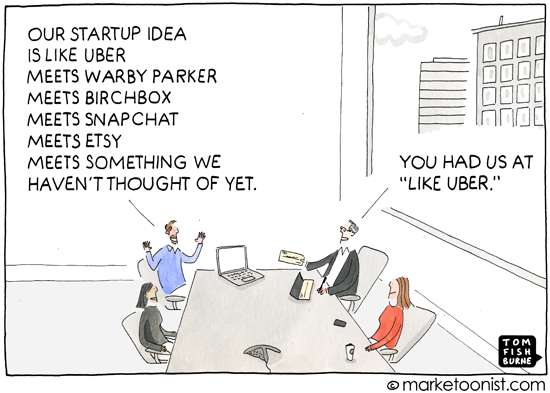
“The best startups generally come from entrepreneurs needing to scratch an itch.” – Michael Arrington, Founder – TechCrunch
You can’t just copy somebody’s execution. You can copy an idea, you can copy a process, you can copy a product, but to copy an execution (implementation in other words as discussed above) is a difficult job, next to impossible, otherwise we would be seeing many Googles, Facebooks, WalMarts today. And the reason these businesses are very well run and executed, the very secret of it lies in the way they got started.
The founders of these businesses identified a problem which was close to them and their personal lives. They had to solve it and they saw an opportunity. When you have lived the problem, understood it with a personal experience, have survived it and realized that it needs to be taken care of, you will come up with a solution that would be hard for others to imitate. The reason it would be hard for others is because of your perseverance, because it is close to your heart, because you will have lived and survived it.
3. Perfection is myth. Getting started is the key.

“If you are not embarrassed by the first version of your product, you’ve launched too late.” – Reid Hoffman
A few years back we did a quick survey and found out that out of the hundreds of projects that we’ve worked upon with our clients, hardly a handful of them were having some respectable traffic figures. It was not a very good sign for us. We decided to dig more into this.
Back then we were merely a development company and would work as per the client’s requirement and as per their direction. We didn’t suggest nor provided any guidance on anything except the technology part. We found out that many of our clients were spending months in first brainstorming their startup or venture idea.
A ‘Perfect’ product is a forever project
Then they want their product or project to be perfect from the get go, so they kept on requesting for alterations mid way of the development, they would request a feature to be added and a certain feature to be removed etc. And we didn’t mind doing any of this. But that was the root cause of the problem.
Our clients were completely relying on us for their product to be ‘perfect’. Most of the clients had an understanding that they will provide us with instructions on their project and idea, we will develop it and they will do some sort of SEO and marketing later on and boom, they will start making money! Except, of course, it almost never worked like that. What our clients didn’t realize back then was that most of their marketing is addressed during their product creation.
It is after that survey that we completely changed our approach and process. We realized that if we want to partner with startups and budding entrepreneurs and founders, we have to take the call. We understood that our experience can be leveraged here. I personally started believing that my initial startup failures and our vast experience of working with clients the old way can become handy in guiding our clients on their new ventures. We agreed that simply becoming a technology partner isn’t enough, we have to become the product catalysts, we had to become the startup evangelists!
4. Build prototype, validate the product, listen to users
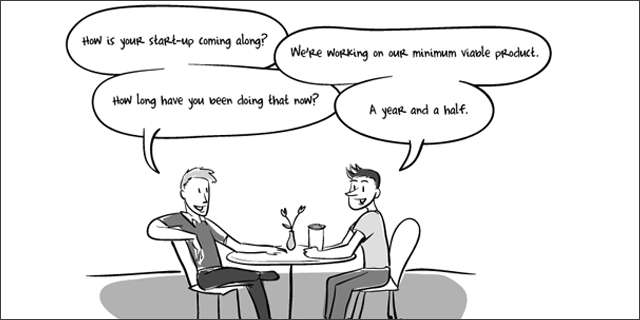
We advise to our clients and partners now not to focus too much on perfection. Perfectionism leads to procrastination. For example, don’t try to compete with Facebook by building all the same features that of Facebook first as you might never make it there now.
Rather build your prototype or MVP (minimum viable product) that has a distinguished identity and USP. Try to address a problem that Facebook is avoiding or not doing. Find out why they are not doing it and just focus on that part. You might fail while trying to do so, but do that quickly even if you have to fail. Getting into the market with an MVP has many benefits. The biggest one is that it will allow you to start listening to your real users. You will get real feedback. And you can use that feedback to add on features accordingly.
Imagine if you added features all on your own without listening to your users!
5. Don’t love your design too much. Customers don’t want your design. They want a solution.
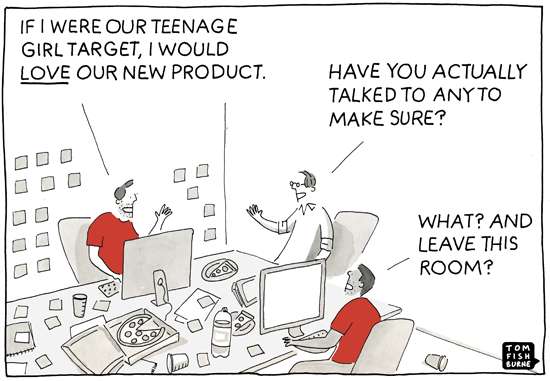
Another mistake that founders do is to fall in love with their design. If you are building a static personal site, it is understandable for you to have that best in class design. However, if you are building a product that will have user generated content (UGC) and still if you focus too much on that creative design work, you might be spending your important time on something that’s not that important.
Design is NOT user experience
Design is not that important for web and mobile products unless you are into hardware. Customers won’t buy from your website just because they love your site’s design. A customer might buy an iPhone just because of it’s slick design, but he won’t shop for that iPhone on Amazon just because of Amazon’s slick design! There is a big difference how a consumer shops online versus how s/he shops offline.
Now, don’t misunderstand UX with design/UI. UX (User eXperience), on the other hand, is very important. Your product needs to be user friendly, not necessarily an award winner in design. Your product needs to easily allow that user to sign up, add that product into the shopping cart, check out and make the payment. If you can allow him/her to do this in one single step, you are brilliant.
Think ‘User friendly’
But if you cannot, you are still okay as long as your competitors don’t beat you on this. But, don’t worry so much about that not so good looking design. Ever wondered how Amazon used to look in 2001? How Yahoo! was in 1999? How Facebook looked in 2005? How did Airbnb look in 2008? Some of the most trafficked websites in the world today are not known for their sexy design as much as they are for their core value proposition and key offering – overall user experience. Check out Craigslist or Reddit if you don’t agree on this.
Having said so, I’m not trying to say that design is not important at all. Of course, it is – but, it’s not a priority and it’s not everything. If you are good at it and have better imagination prowess or possess a team that can come up with a very creative stuff without wasting much time and money, go ahead and get that design.
But, if you don’t and can’t, it’s not worth your time and money to focus on design right upfront as you have better issues at hand before design that will need your attention. You can always improve upon your design in your upcoming versions, but improving upon your key offering will be difficult if it wasn’t able to catch enough eyeballs in the first hit.
6. Don’t fret about your features or product launch, think of the problem first that you want to solve.
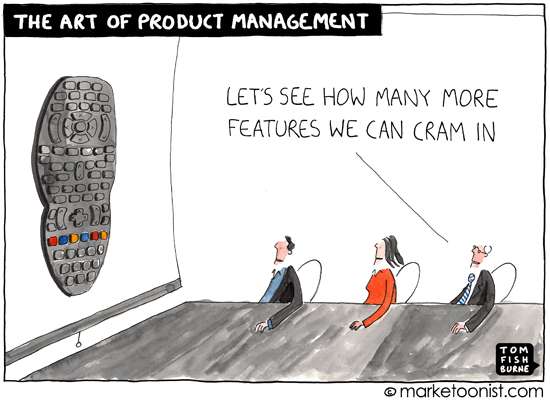
Entrepreneurs many times misunderstand a successful product with a product that has many features. This is completely wrong. Twitter, when it started, was doing just one thing – allowing you to send a 140 characters messaged branded as a ‘Tweet’. It didn’t have any other feature at all. Later on they learnt from their users and added several features that they understood their target and existing users would love using. This is the key differentiation between how successful startups adapt to the user requirement and how others don’t and simply go ahead by adding unnecessary features.
Remove those unwanted features if you can today. You are better off with those 3 great modules that addresses a clear problem rather than having 30 features that tries to do everything.
Now, most development companies you might partner with wouldn’t advise you this. Because the more the number of features, the more money they will make out of you. Thankfully, we are different! 😉
7. Don’t fall in love with your product. Love your customers and let them love your product.
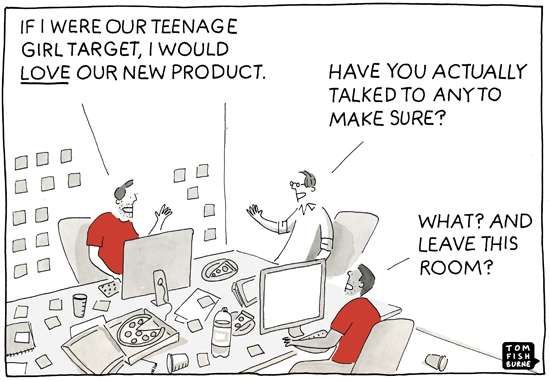
Create a product that your target users would love to use, not just you. Many products are created out of the founder’s passion for a particular thing. Which is alright but if that doesn’t address a real problem very efficiently, the founder might end up being the only person loving that product. Falling in love with your own product is a vicious circle. If you end up doing that, you will require a long time to come out of it because as time passes, you will treat your product as your baby and things will just start getting worse.
Your product could be your brainchild but can never be your baby. Don’t call it your baby. It is not a living thing. It won’t pay by itself. Your users will, your customers will. You will alienate your product one day if it’s not fulfilling your dreams. So, don’t fall for this. Your customer is the most important stakeholder of your game, love him, respect him and he will give it back.
8. Trust your guts but verify with validation.
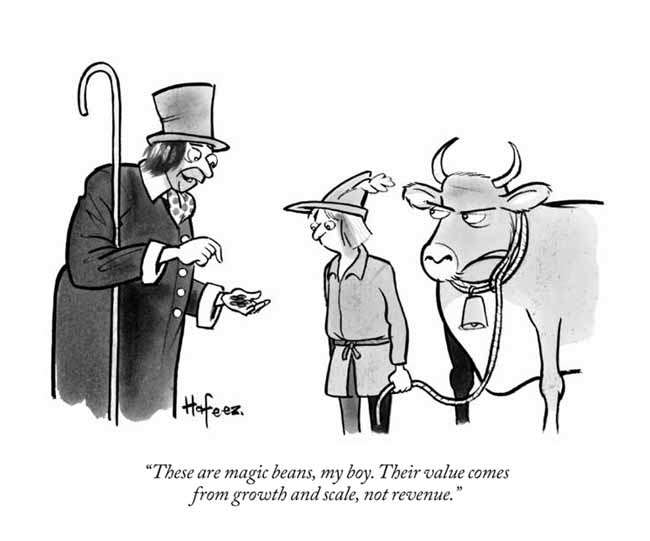
Many a times, since the product is our baby, founders continue to rely on their guts and end up being isolated. It is not enough to simply continue believing in your gut feeling. Gut feeling and what you believe from deep inside is no doubt the utmost important factor before you want to startup, but if you simply and blindly rely upon that, you might not like the end result a few months down the line.
Your target audience must be in agreement with your gut feeling and that is when you can say that you have validated your product. Finding the right product-market fit is tricky and getting traction is even trickier. You have got to validate your product ASAP.
Try going to market with a soft launch or a beta. Release your beta, that would probably be with your MVP product, to a closed network of people. People you would have known or are in a known circle and can give you neutral opinion of your product/service and feedback that you can take as a base and work upon. Naturally you don’t have resources when you are starting up and with limited resources your launch also has to be limited. But you want to capture this to build a solid foundation and then work on your next phase to come out with an improved product and service offering.
9. Is your site/app converting users or is simply your visiting card?
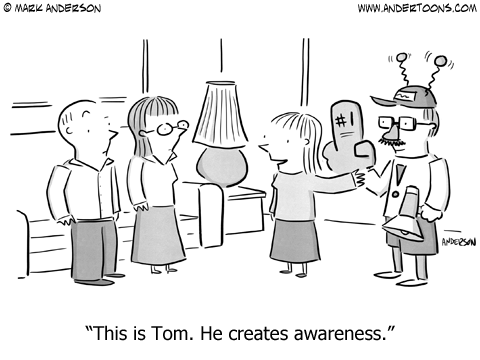
Gone are the days when every other shop needed an online place just like they had to have a visiting card. Your site needs to be engaging and your content needs to be appealing to your target audience. You want to make sure that your visitor finds the material and content displayed on your site interesting and gives you more page views. And in doing so, you are increasing the probability of him/her of getting converted by subscribing to your newsletter, sending you a contact request, signing up or simply buying.
So, what do you think about these tips? Share your thoughts in the comments section. In case you are planning to startup, contact our business team at NCrypted for serious business consultation.
In case you wish to deep dive into understanding business models of some of the world’s most famous startups, you would like going through some articles our content research teams have penned down recently.
The Conclusion
Over the last 22 years, I have been a prime advocate of lean startup, which you can see in our blogs and writings elsewhere. Our customers would have noticed this in our advocacy during every project discussion. However, we learnt that while many founders get the point, it is not easy for them to implement these methods. And often they end up spending a lot more building a product nobody wants to buy or sign up for. And as a result, they either run out of capital very soon and/or are not able to raise venture capital.
It is to address this very concern, our core advisory team came together to do something about this situation. We designed this system into an incubation program for early stage founders, especially non-technical founders building a digital startup. StartupGuru is proud to be running one of its kind incubator program that addresses a very large under-represented segment of the ecosystem – non-tech founders. Learn more about the program on our homepage if this interests you further from here.
Happy building!




I’m happy you found it helpful. Thanks for coming by and sharing your thoughts here.
Have a nice day!
Very helpful read. Thank you so much. This has me even more motivated. A lot of lessons here to implement.
This is brilliant, thanks for the tips